MuscleTech has been releasing a lot of products with unusual ingredients lately. Last year, in MuscleTech EuphoriQ: The Smart Pre-Workout with enfinity Paraxanthine, we covered their pioneering use of paraxanthine, a caffeine metabolite that's a kind of new-and-improved energy source as an alternative to caffeine.
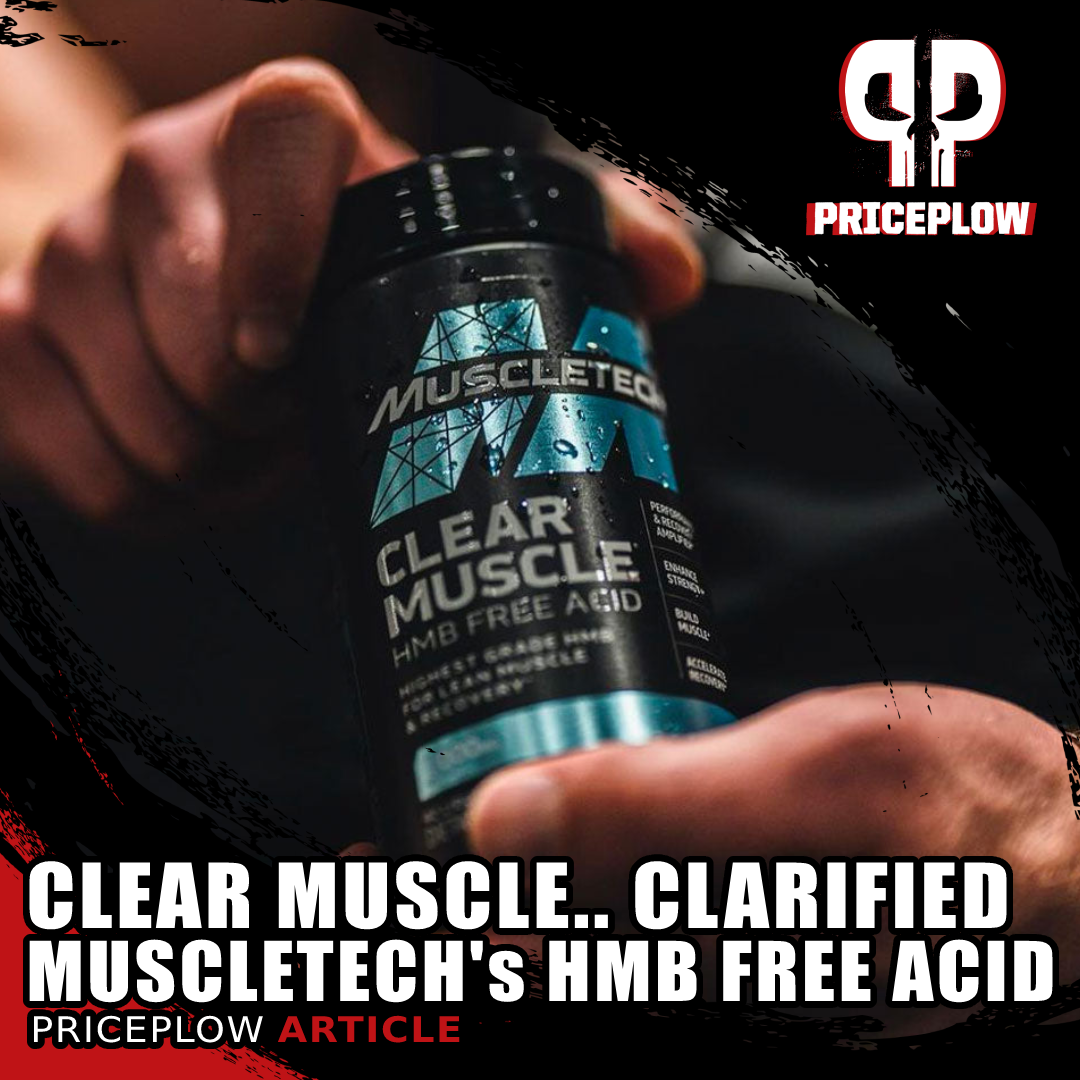
What is MuscleTech's Clear Muscle? It's a muscle health supplement using BetaTOR (HMB Free Acid) and some betaine to get you back into the gains territory after super hard training!
As scientists continue to identify metabolites that drive the effects of common, long-used ingredients, formulators at companies like MuscleTech often opt to use those metabolites instead – an interesting development in next-gen supplementation.
But paraxanthine wasn't the first time this has been done. Today we're updating our research on MuscleTech Clear Muscle, a simple, two-ingredient formula based on another metabolite. This time, it's the key metabolize of leucine, the branched-chain amino acid (BCAA) we all know and love that triggers mTOR signaling to induce muscle protein synthesis.
MuscleTech Clear Muscle: HMB Free Acid for next-level gains in aggressive training regimens
The metabolite we're here to discuss is beta-hydroxy-beta-methylbutyrate, also known as HMB -- and it acts as a signaling molecule to exert many of leucine's effects. But more specifically, Clear Muscle contains HMB Free Acid, marketed as BetaTOR on the label.
We have a massive research article coming up on HMB, including an epic podcast with one of the world's foremost researchers on the key molecule, but we want to tease some of that information with you right here, right now.
So let's get into Clear Muscle, but first check the PricePlow news and deals:
MuscleTech Clear Muscle Liquid HMB – Deals and Price Drop Alerts
Get Price Alerts
No spam, no scams.
Disclosure: PricePlow relies on pricing from stores with which we have a business relationship. We work hard to keep pricing current, but you may find a better offer.
Posts are sponsored in part by the retailers and/or brands listed on this page.
This area is reserved for Team PricePlow's upcoming videos.
Subscribe to our channel and sign up for notifications so you catch it when it goes live!
MuscleTech Clear Muscle Ingredients
In a single, 1-softgel serving of Clear Muscle from MuscleTech, you get the following -- but note right up front that the serving size is to take 1 softgel three times daily, so the total dose here will be tripled:
-
BetaTOR (beta-hydroxy-beta-methylbutyrate free acid) – 1,000 mg
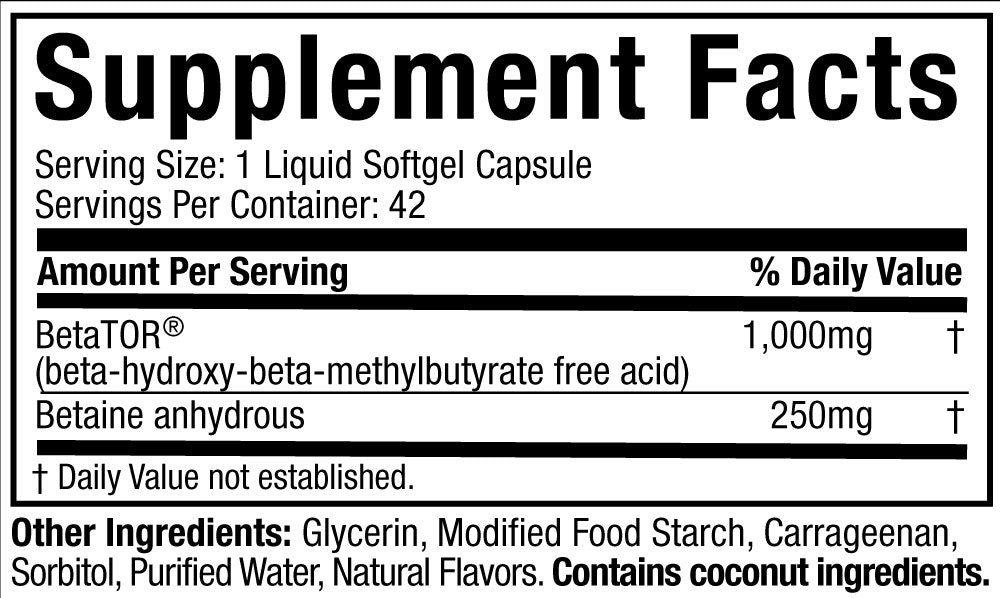
Note that this label says 42 softgels, but there's also an 84-softgel bottle too. The 42 size bottle is generally for Walmart, but check each store to make sure!
The main ingredient in Clear Muscle is BetaTOR, a patented form of HMB Free Acid from TSI Group Ltd that was renamed from myHMB Clear. BetaTOR's clear visual presentation is what led MuscleTech to name the supplement Clear Muscle, which originally launched in early 2014.
HMB is a metabolite of leucine, the most anabolic of the three branched-chain amino acids (BCAAs). It's actually a signaling molecule first and foremost:
Mechanisms of action
HMB gained a lot of attention in the early 1990s as research emerged showing that the powerful metabolite creates many of the same effects as leucine, but at a fraction of the dose. It's been shown to activate many of the same metabolic switches leucine does. Perhaps most notably, both leucine and HMB activate mammalian target of rapamycin (mTOR),[1] which is key for initiating the anabolic response.
It can also upregulate growth hormone (GH) and insulin-like growth factor 1 (IGF-1),[2] two famously anabolic hormones.
HMB's specialty: preventing muscle breakdown
There's been a lot of advocacy for taking BCAAs before a workout -- especially when fasted -- thanks to the fact that leucine is a strong anti-proteolytic agent, meaning it can help decrease muscle protein breakdown during metabolic stress.[3] However, if we take a closer look at the research on leucine's anti-catabolic effects, a practical problem emerges: for really effective anti-catabolism, huge doses of leucine are required.
Most of the studies we'll discuss have to do with sick people or animals who are at risk of muscle loss due to their illness. Although it may not intuitively seem like studies in these populations have much applicability to healthy human beings, muscle wasting diseases are the best way to study catabolism. The same mechanisms are behind muscle loss in any setting, whether that's in a sickbed or during a marathon.
Leucine is great for this, but we need tons for the effect
In one study where mice with a wasting disease got leucine-enriched food, leucine was able to reduce muscle loss by about 11% – but leucine accounted for 3% of the mice's overall caloric intake, which is a huge proportion when you're talking about a single amino acid. Translating to humans, this means if you're eating a 2,000 calorie diet, you'll need 60 grams per day of just leucine before you could expect to see the same results.[4]
In a similar study with rats, 1 milligram of leucine per kilogram body weight per day reduced muscle wasting in sick rats by 33%,[5] but again, if we scale the dose to human equivalence, that's 13 grams of leucine per day.
Taking 13 to 60 grams of pure leucine every day is possible, but not practical or economical.
This is where HMB comes in
Fortunately, scientists eventually identified a leucine metabolite responsible for the lion's share of these effects – and that metabolite is HMB! Since only 5% of leucine gets converted into HMB,[6] this makes HMB a potentially very efficient way to reap the anti-catabolic benefits of leucine.
This hypothesis has been substantiated by further research in animals. For example, one study found that a 0.25-gram/kg body weight dose of HMB was 60% more effective than a 1-gram/kg dose at preventing muscle wasting in sick mice.[8] Four times as much leucine was less effective than the HMB!
One randomized, double-blind, placebo-controlled study in humans tested HMB's anti-catabolic effect on muscle loss in older adults during 10 days of bed rest,[9] which is a situation that even healthy young people might find themselves in. Muscle loss during convalescence after serious injury is a well-known medical problem. In this human study, subjects received 3 grams of calcium HMB daily.[9]
Although this dose is larger than what's present in MuscleTech's Clear Muscle, MuscleTech is using free acid HMB, which is known to be more bioavailable than calcium HMB.[10,11] The bed-rest study found that HMB treatment prevented muscle loss during bed rest – the HMB group lost no muscle, while the control group lost about 2 kilograms.[9]
Other studies have found that HMB significantly decreases markers of muscle damage during long-duration aerobic training and high-volume weightlifting.[7,12]
But also, anabolic
But HMB isn't just anti-catabolic – it is also, like leucine, pro-anabolic - but we have to properly define our terms. With the aging population, we can state that it's anabolic (especially if Vitamin D levels are sufficient[13-15]) -- but with a younger, active population, it's most effective in times of intense training.
For instance, a study in elderly people over the age of 70 found that HMB supplementation during 8 weeks of structured exercise gained about twice as much lower body strength:17.2% for the HMB group vs 8.3% for the controls.[16]
Another study with a near-identical design reached similar conclusions: 13% gain in lower body strength for the HMB group vs. 7% for the control group, and 13% vs 11% gains in upper body strength.[17]
But it doesn't just work with older people. Young, healthy athletes can benefit from HMB supplementation, too, when used in the right conditions.
A 2014 randomized, double-blind, placebo-controlled study found that resistance-trained males averaging 21 years of age gained significantly more strength and muscle mass taking HMB than they did a placebo control.[18] The placebo group gained about 6% total strength on the big three lifts – squat, bench, and deadlift – while the HMB group gained an amazing 17%. They also gained significantly more muscle – 7.4 kg vs. 2.1 kg – and lost about 5.7 kilograms of body fat, while the placebo group only lost 1.7.[18]
What you have to realize here -- and this is discussed in Episode #093 of the PricePlow Podcast - is that these participants were in a serious training program. They were not just doing their "same old workout"... but they also significantly outperformed the control group (which also had the same training program) when given HMB.
This leads us to the next part, and one that MuscleTech consumers need to fully understand:
When HMB works – high volume, high intensity
So if HMB performed so well in that last study, why did it fall into disrepute during the early 2000s? Beyond the fact that the ingredient was mis-marketed by overzealous companies back then, the full answer can be found in the International Society of Sports Nutrition's official position on HMB.
In 2013, their research review on HMB concluded that:
"Research [on HMB effectiveness] indicates that in trained populations it is critical that the exercise stimulus is of adequate intensity and volume to cause skeletal muscle damage. If these conditions are lacking, HMB is not likely to be efficacious."[19]
The authors cite two specific studies that found no benefit from HMB supplementation. What they had in common was a lack of volume or intensity manipulation. In both, training programs remained the same during HMB treatment.[20,21]
We think the reason HMB did so well in the 2014 study is that the experimental design used periodized training, which is a technique for causing supercompensation by pushing athletes just over the edge of their capabilities.
That's the kind of program where HMB can be expected to shine. If you're planning to go hard, and are expecting to be sore with some pretty brutal recovery times, MuscleTech Clear Muscle is definitely worth trying. But if you're going to do the same old 3 sets of 10 at low intensity three days a week, we'll be honest and tell you to step up your intensity first before spending your money.
There's a ton of other information in our new article titled HMB (β-hydroxy β-methylbutyrate): Performance-Driven Muscle Supplement -- check it out for the full story on HMB.
-
Betaine Anhydrous – 250 mg
Betaine, also known by its chemical name trimethylglycine (TMG), is a compound that can help increase your body's production of adenosine triphosphate (ATP)[22] by donating methyl groups to various metabolic processes. Your cells use ATP as their energy source, so more ATP generally translates into better performance and recovery.
Betaine is also an osmolyte, meaning it can help increase the hydration level of your cells, too, making them more resilient in the face of metabolic stress and heat stress.[23-25]
These two effects – ATP upregulation and cellular hydration improvement– make betaine a powerful ergogenic aid. But that's not all – because of its status as a powerful methyl donor, betaine may help keep your blood homocysteine levels from rising too high,[26] which is great as homocysteine is associated with increased risk of cardiovascular disease.[27]
Studies show betaine supplementation in higher doses (generally 2.5-5 grams daily, which we won't have here) can increase:
- Strength[28,29]
- Power[28-30]
- Body composition[25,31]
In one particularly striking study using 2.5 grams per day, college-aged women took betaine during an 8 week weightlifting program and lost 4.4 pounds of body fat, compared to only 2.8 pounds lost by the placebo group.[32]
So the point here is that taking 3 softgels of Clear Muscle can provide 750 extra milligrams of betaine per day to support methylation, ATP production, and hydration, but this alone isn't as much as was used in clinically-reviewed studies with respect to performance and body composition.
The MuscleTech EuphoriQ pre-workout contains that full 2.5 gram dose in a full serving, but if you want to use less than a scoop, or want to go over that dose, Clear Muscle can certainly assist.
Dosage and Directions
Take one softgel three times a day, every day. One softgel should be pre-workout on training days.
Again, it's worth repeating that this is for times of intense training. Clear Muscle can definitely be used for anti-aging purposes for seniors, although most MuscleTech consumers are younger athletes.
Listen to Jacob Wilson talk about HMB Free Acid in BetaTOR
Clear Muscle Brings Free Acid HMB... and PricePlow is bringing more research and content
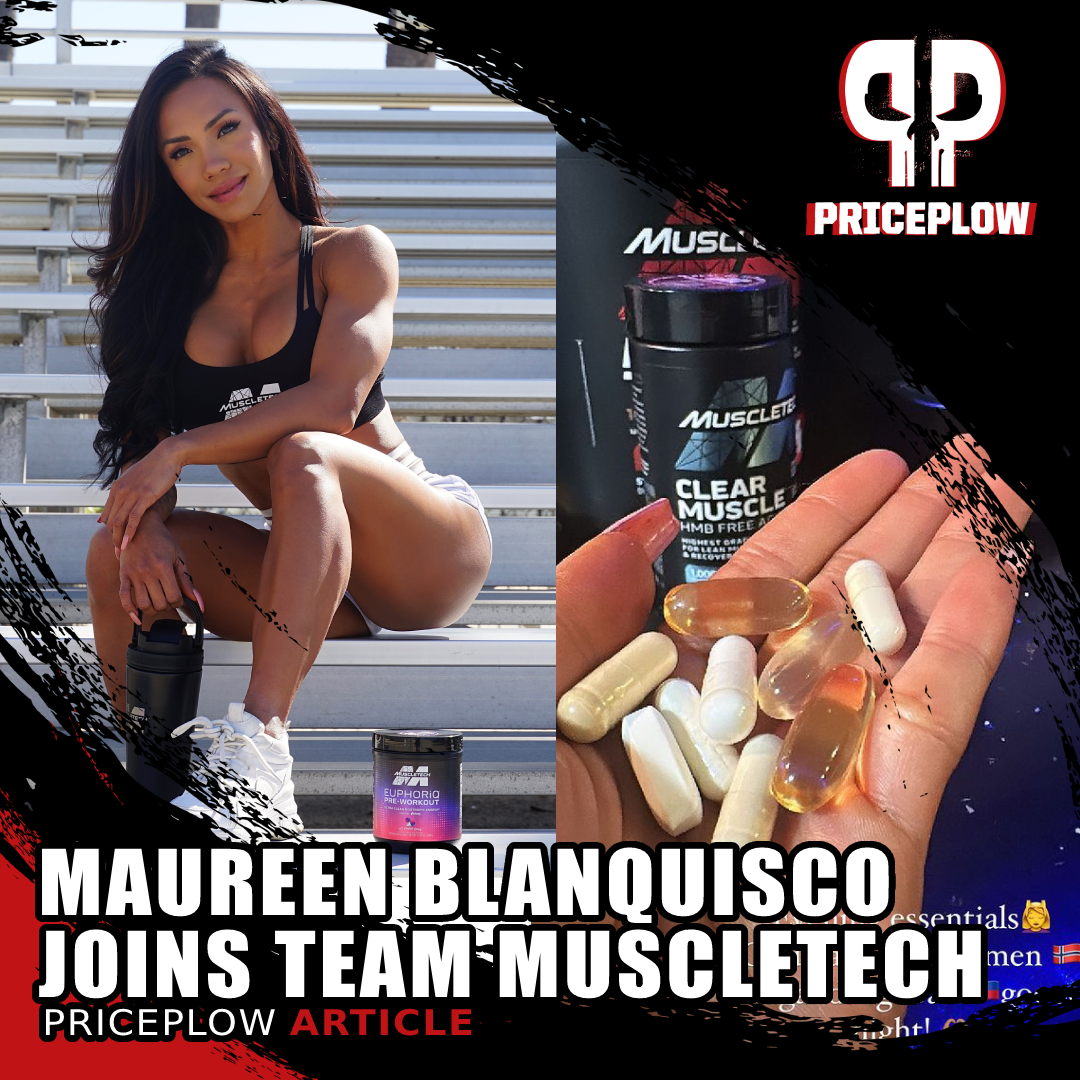
Late last year, MuscleTech's Scott Welch said that the brand was back in bodybuilding, and he wasn't kdding -- MuscleTech has signed #1 Rated IFBB Bikini Competitor, Maureen Blanquisco! And in her hand, you can see some Clear Muscle softgels!
We're glad to see HMB making a big comeback, now that we properly understand it. In the years that have elapsed since it burst onto the scene a couple of decades ago, some important developments in fitness culture have definitely moved us in the direction of more intensity and volume.
For example, since HMB's first, meteoric rise, we've seen a surge of interest in powerlifting, and the rise of CrossFit – and although these two are very different training philosophies, they're both examples of a high-volume or high-intensity approach to training that could benefit from supplemental HMB.
Long story short: if you're absolutely wrecking yourself with workouts and want to get back into the positive sooner than later, it's time to give HMB another shot, and MuscleTech Clear Muscle's HMB Free Acid is the way to do it.
MuscleTech Clear Muscle Liquid HMB – Deals and Price Drop Alerts
Get Price Alerts
No spam, no scams.
Disclosure: PricePlow relies on pricing from stores with which we have a business relationship. We work hard to keep pricing current, but you may find a better offer.
Posts are sponsored in part by the retailers and/or brands listed on this page.
Note: This article was originally published on March 11, 2014 and updated April 19, 2023 with vastly more information.
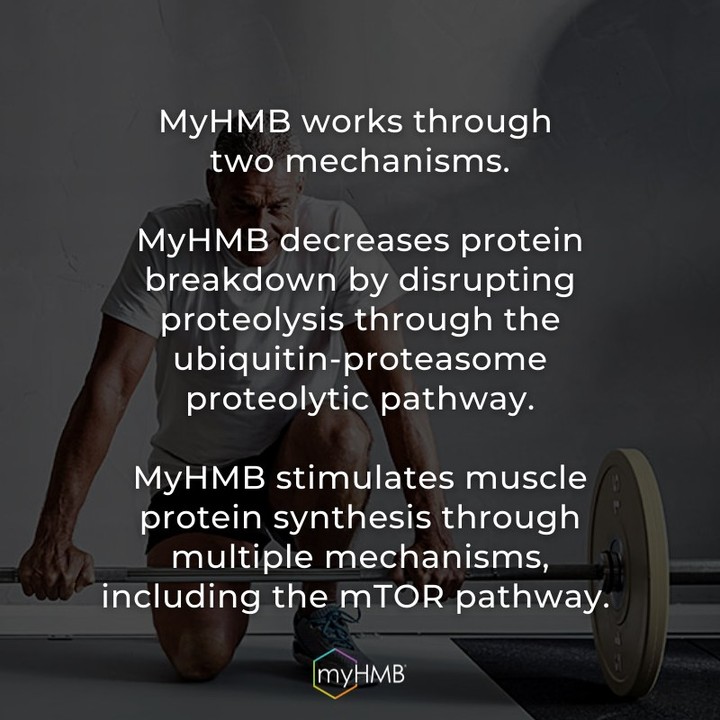
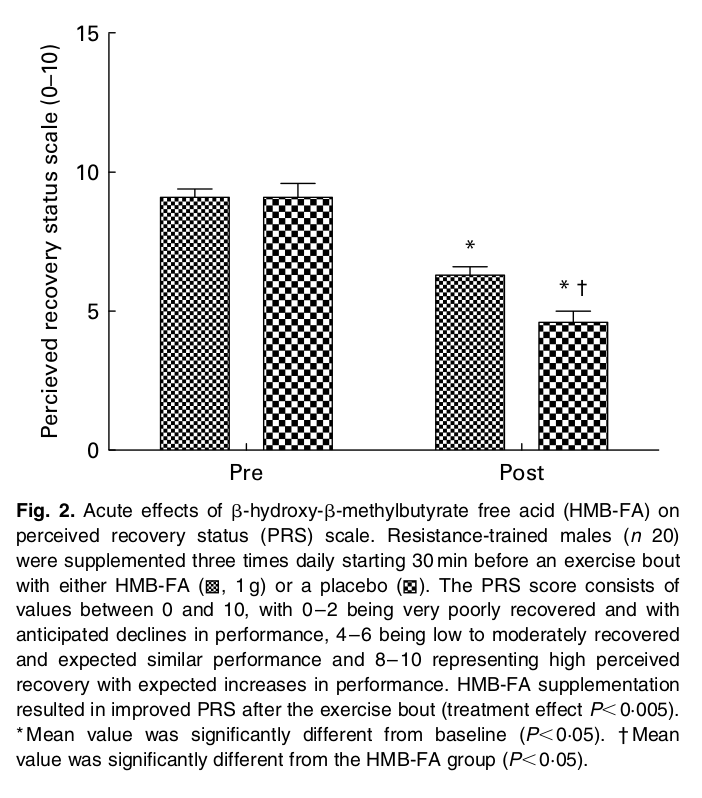
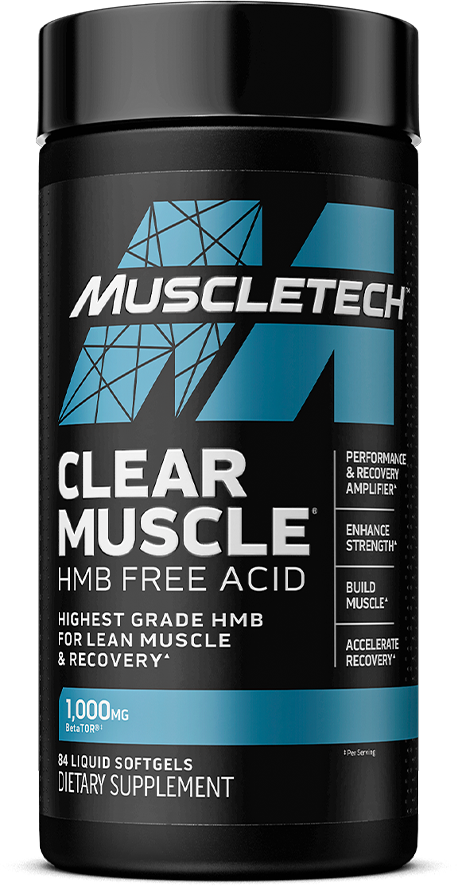
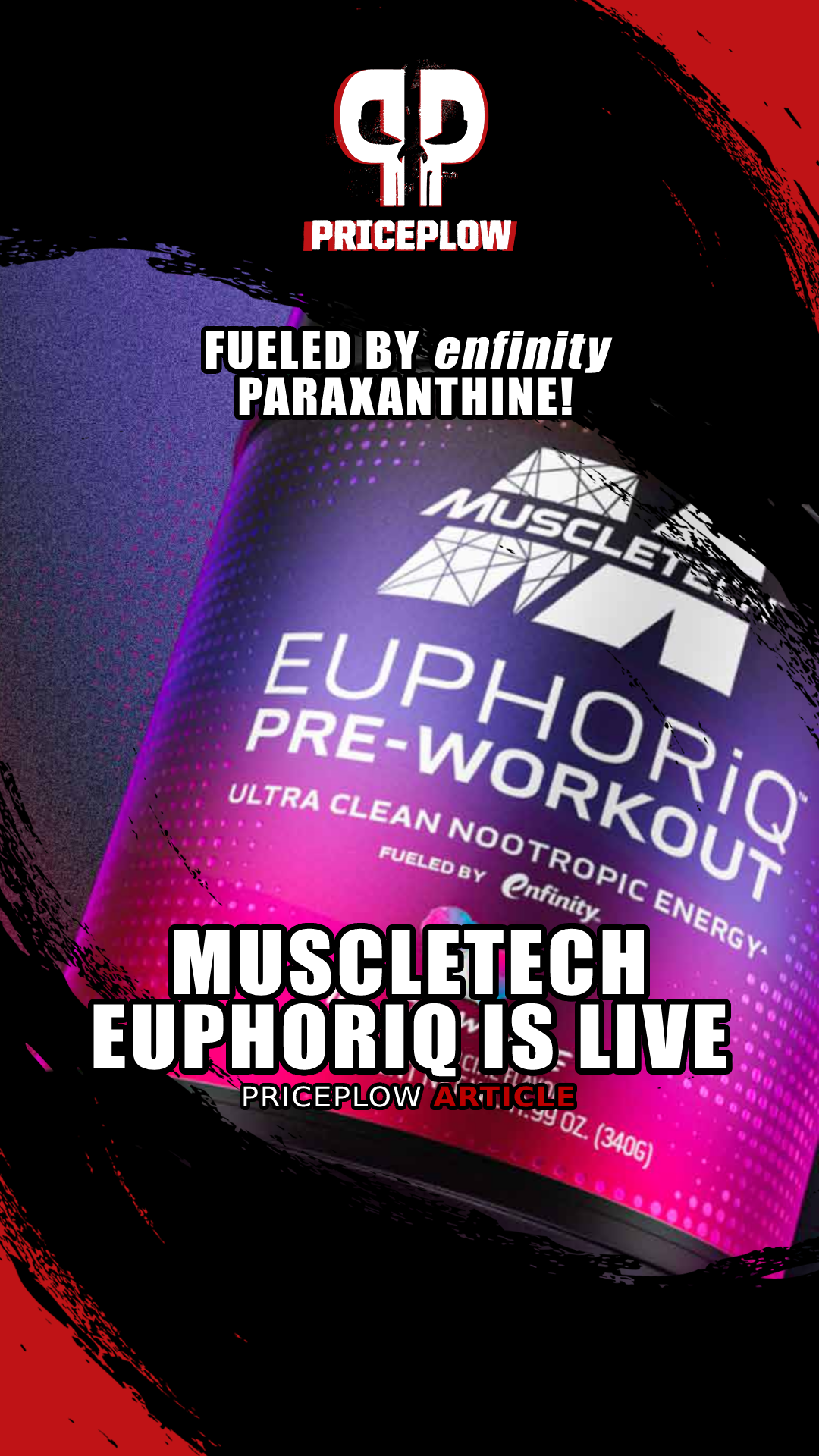


Comments and Discussion (Powered by the PricePlow Forum)